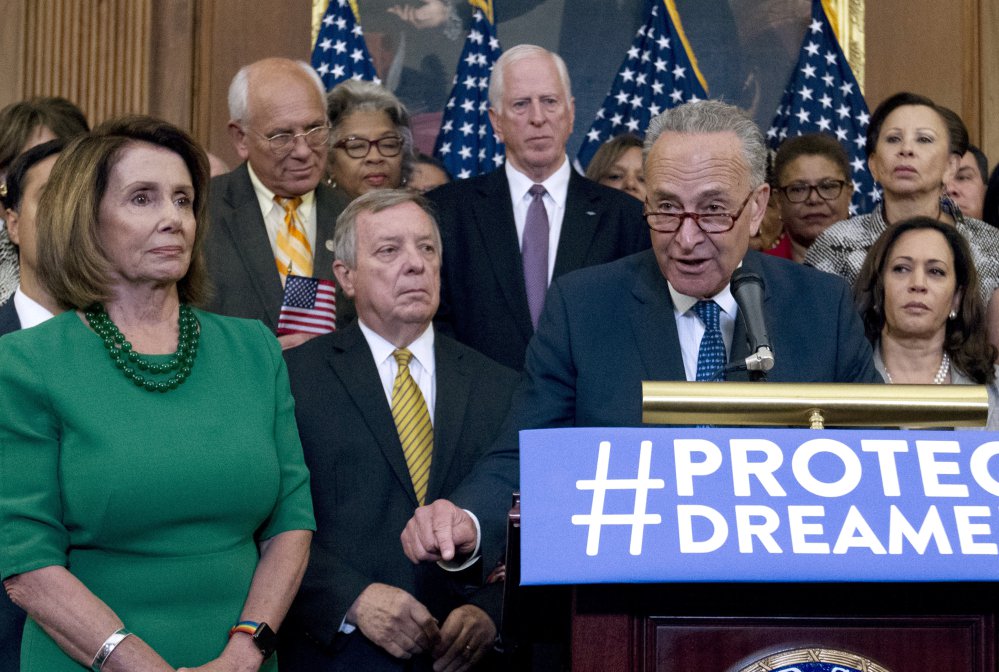The deal President Donald Trump recently struck with Democratic Party leaders Chuck Schumer and Nancy Pelosi to fund the government through December, and the preliminary proposal to eliminate the debt ceiling altogether, represent well one of the most positive (potential) consequences of Trump’s deconstruction and destruction of the Washington status quo: the incidental formation of an independent political party.
According to Gallup, more than 40 percent of America considers itself politically moderate. Yet because of the rise of highly partisan news media, and the faceless nature of social media, the casual observer could be forgiven for concluding that America is on the verge of political civil war in the “age of Trump.”
An independent political party is needed to bridge the perceived ideological divide, so I’d like to make the case for the deliberate formation of one. I will define a political independent and propose a bipartisan voting structure; outline an independent policy construction framework, and highlight a key issue around which an independent platform can be constructed.
While, as previously stated, over 40 percent of Americans consider themselves politically moderate, I believe that more than 75 percent of Americans could agree on a workable solution to the vast majority of key political issues. This 75 percent cohort can be defined as those ideologically disgusted by hardliners Elizabeth Warren on the left and Ted Cruz on the right — two politicians emphatically uninterested in prioritizing the development of workable political solutions over the building of ideological brands.
The House Problem Solvers Caucus voting structure represents well how the vast majority of Americans, sitting around the dinner table, might come to a workable agreement: For a policy proposal to make it out of the caucus, 75 percent of its 43 members and 51 percent of its Republican and Democratic members must vote in favor of the proposed policy. This is picture-perfect bipartisanship.
Independent policy construction must work backward from end goal to policy solution, while remaining ideologically agnostic toward government and the free market. Too often, both sides of the political aisle agree on the end goal (i.e. health care coverage for all), but allow ideological rigidity to drive the policy construction process (i.e. free market insurance versus government insurance).
For Americans in search of a workable solution, the government-versus-free market debate can be resolved via the following principle: The government exists to provide goods and services, such as national security, public safety, public infrastructure and the social safety net, that do not meet the free market’s “return on investment” hurdle. But the government is terrible at implementation, which is where the free market comes in.
As I wrote in a May Maine Compass column, my bipartisan framework is to “let the federal government fund it, and the free market run it.” This framework is perhaps best demonstrated by Switzerland’s health insurance market, which is heavily funded and regulated by the government in order to provide universal coverage, yet run almost entirely by private companies.
Unlike the high-profile-yet-low-priority issue of income inequality, health care is critically important to Americans, making it a key issue around which an independent political platform can be constructed. And with the Democratic Party quickly, and dangerously, making Bernie Sanders’ “Medicare for all” plan a key issue for the 2020 presidential election, the political environment is ripe for an independent policy blueprint for covering the 29 million Americans without health insurance.
According to the Kaiser Foundation, about 156 million Americans have employer-based health insurance and another 106 million are covered by Medicaid and Medicare. For all intents and purposes, we are Switzerland. Ideologically driven, free market-only and government-only “solutions” have no place in the discussion.
According to The New York Times, in 2015 the United States spent about $7,200 (federal and state) per Medicaid recipient. If we conservatively assume it would cost $10,000 per recipient to cover the 29 million uninsured, direct federal subsidies for private insurance would cost $290 billion, or less than 10 percent of the federal budget. While manageable at 1.5 percent of gross domestic product, it is likely a portion of this cost could be defrayed by charging the resultant pool of 135 million Americans receiving “free” insurance a monthly premium.
So in conclusion: While the idea that the American political funding structure would support an independent political party appears far-fetched, the Democratic Party’s systematic implosion at the grass-roots level under Barack Obama and Congress’ current 16 percent approval rating represent decisive evidence of electorate revolt against the current system.
Benjamin Michaud lives in Portland.
Send questions/comments to the editors.



Comments are no longer available on this story